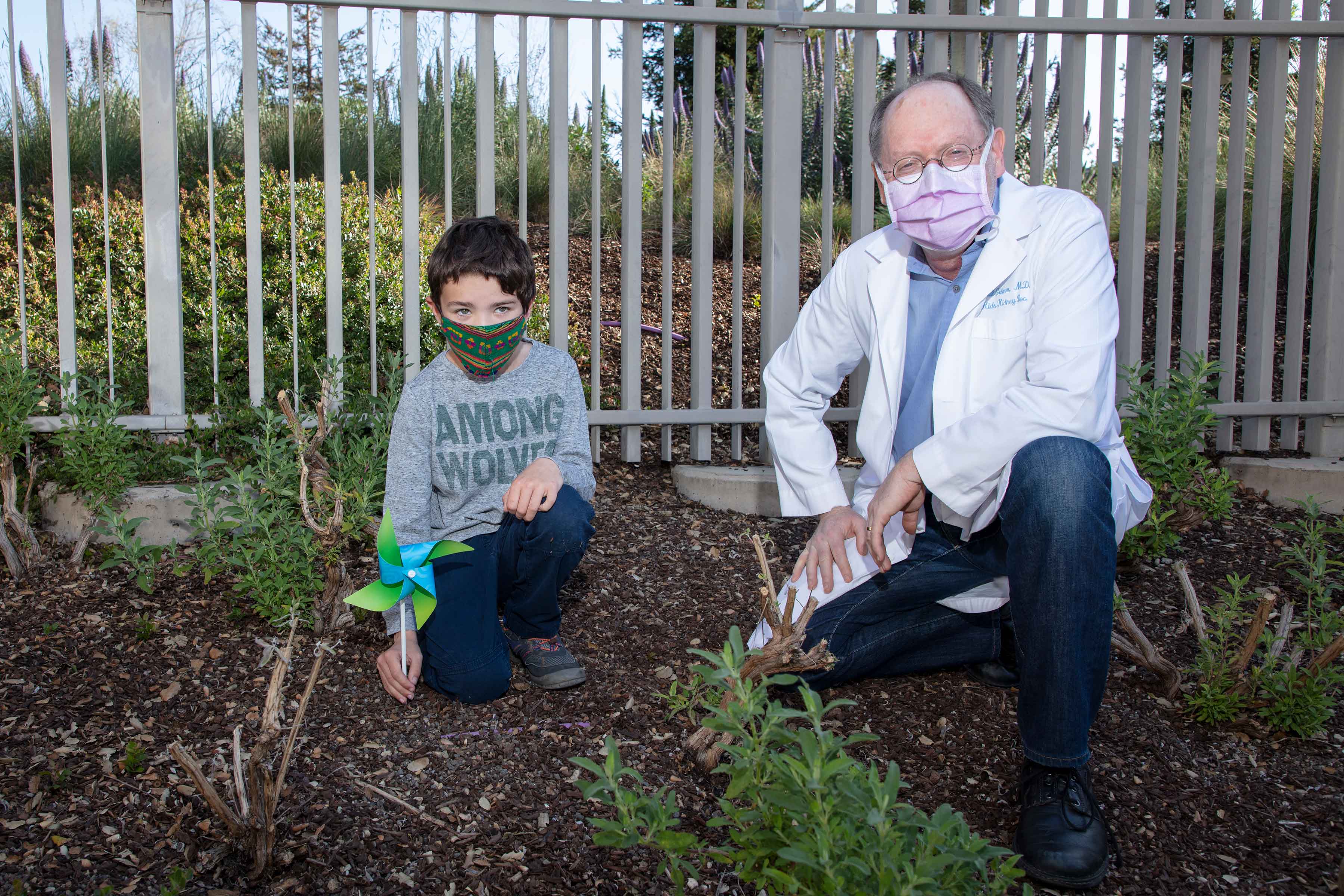Q: Who is a candidate for kidney transplantation, and what is the process for the determination?
A: We believe that all children who are facing reduced kidney function and kidney failure should be considered for a kidney transplant. Although dialysis can keep patients alive, to achieve the best quality and length of life, we strive to get a kidney transplant for these children.
To determine whether to refer a child as a transplantation candidate, a medical care team completes a detailed review of the patient’s medical records and conducts blood tests and diagnostics that are tailored to that specific child’s needs. At centers like Stanford Children’s Health, the family and child meet with a multidisciplinary organ transplant team for a holistic evaluation that includes psychologists, social workers, child life therapists, pharmacists and financial counselors in order to develop a complete understanding of the family and identify areas where support is needed to ensure the family has the highest chance of long-term success in the transplant process. Based on this information, a Transplant Selection Committee provides a report of their assessment, including whether the child is eligible for a transplant and a list of plans or recommendations for care going forward.

Q: Where do donor kidneys come from? Can I donate a kidney to my child?
A: There are two possible sources: deceased organ donors and living donors. Deceased donors are people who have recently suffered brain death, who had agreed to become organ donors before their death or whose families make the generous decision to donate their organs.
Living donors, from whom a single kidney is removed, have a genuine and selfless commitment to help a child. They are often, but not necessarily, family members. We prioritize the health of the potential donor, which includes an intensive medical evaluation to determine whether the donor is healthy or would themselves come to unacceptable harm from donating. Only when we have determined that the donor is healthy, mature, and free of unnecessary medical and psychological risks would we proceed with the donation process.
Q: How long will my child need to wait for a kidney?
A: Wait times vary depending on many factors, including a child’s age, blood type, immune sensitization, and complexity of the surgery that is anticipated. If a living donor is approved, the wait may only be a few weeks. But if a living donor is not available, the wait for a deceased donor kidney can be much longer. People often ask how high their child is on the wait list, but it is not that simple because many factors impact which child gets which deceased donor kidney. However, the average waiting time is typically one to two years.
Q: What does the transplant surgery entail, and how long does it take?
A: Kidney transplants are performed under general anesthesia. Once the patient is asleep, a surgeon makes an incision in the lower side of the abdomen and places the donor’s kidney inside. Usually the patient’s own kidneys will be left where they are unless they are causing pain or other complications.
Then surgeons connect the donor kidney’s blood vessels to the patient’s blood vessels and attach the new kidney’s ureter to the patient’s bladder. Once the kidney is in place and functioning properly, the incision is closed. Typically, the surgery takes a few hours.
If your child is receiving a transplant from a living donor, the procedure can be scheduled in advance. If the organ is coming from a deceased donor, your family will need to be on call and available to come to the hospital as soon as a match is identified.
Q: What will I need to monitor for following the surgery?
A: In some cases, a patient’s immune system may reject a transplanted organ, attacking it with antibodies. It is important to contact your child’s provider right away if you notice symptoms of rejection, which may include:
- Fever
- Pain around the kidney
- Decreased urination
- High blood pressure
- Elevated blood creatine (detected by a lab test)
To help avoid rejection, a transplant requires lifelong use of daily medications that suppress the immune system (called immunosuppressants) and prevent it from attacking the new kidney.
Q: What is my child’s prognosis following a kidney transplant?
A: In most cases, transplantation can significantly improve a child’s health. Children who undergo a kidney transplant have a 95 percent chance of surviving five years or more following surgery. But it is important to recognize that living with a transplant is a lifelong process. Immunosuppressant medications must be taken continuously, and your child will have frequent follow-up visits with his or her care team. Every child and every transplant is unique, and it is our goal to advance the field of pediatric nephrology and transplantation to continuously improve patient outcomes.
 Paul Grimm, MD, is a pediatric nephrologist and medical director of the pediatric kidney transplant program at Stanford Children’s Health in Palo Alto, CA. Stanford Children’s Health’s kidney transplant program is a national leader for volume and survival outcomes. In the last five years, the program has performed more pediatric kidney transplants than any other program in the United States, and has 100 percent one-year and three-year survival rates for its kidney transplant patients.
Paul Grimm, MD, is a pediatric nephrologist and medical director of the pediatric kidney transplant program at Stanford Children’s Health in Palo Alto, CA. Stanford Children’s Health’s kidney transplant program is a national leader for volume and survival outcomes. In the last five years, the program has performed more pediatric kidney transplants than any other program in the United States, and has 100 percent one-year and three-year survival rates for its kidney transplant patients.
Physician-scientists at Stanford Children’s Health are constantly working to advance the field of pediatric transplantation. This includes a groundbreaking collaboration between the pediatric stem cell transplant and kidney transplant teams to treat Schimke immuno-osseous dysplasia (SIOD), an extremely rare genetic disease that affects multiple systems in the body, including the kidneys and immune system. The first-of-its-kind treatment is a two-transplant approach—a stem cell transplant, which provides the patient with a new immune system, followed by a kidney transplant from the same donor, usually a parent. Replacing a child’s immune system with a parent’s allows the transplanted kidney to be accepted by the body as if it were native. The risk of rejection that comes with kidney transplants is potentially eliminated—as is the need for long-term immunosuppressant medication. Doctors are optimistic that this unique approach to treating SIOD could be used to treat other rare, genetic diseases in the future.
To learn more about the pediatric kidney transplant program at Stanford Children’s Health visit: https://www.stanfordchildrens.org/en/service/kidney-transplant
Web ID 8006







